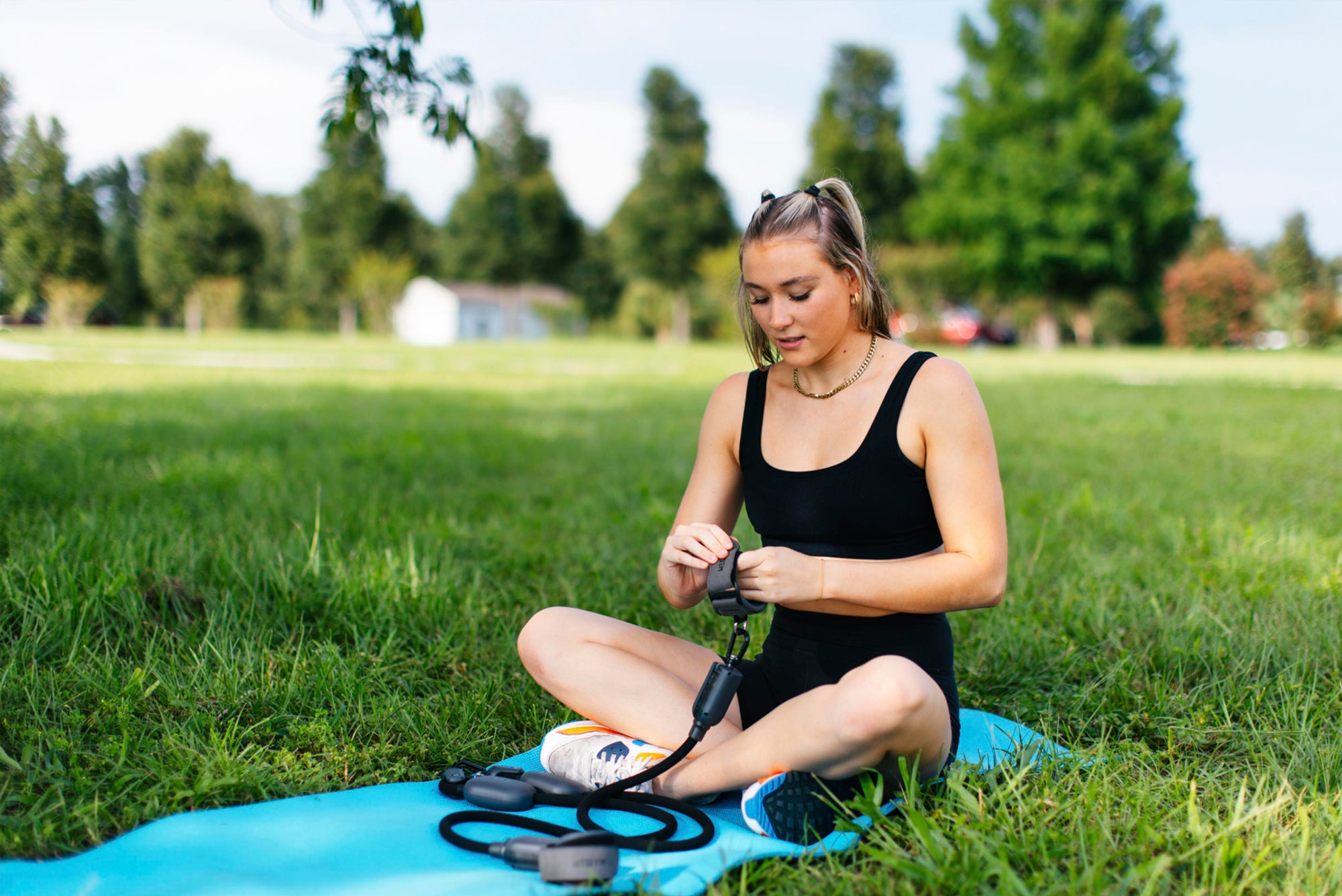Navigation
- What Are the Mainstream Yoga Mat Production Materials?
- What Is the Environmental Impact and Characteristic of Natural Rubber Yoga Mats?
- What Is the Environmental Impact and Characteristic of Suede Yoga Mats?
- How to Handle Old Yoga Mats?
- Conclusion
Collectively, the choices we make in our daily lives have a significant impact on the environment. By choosing eco-friendly products, such as eco-friendly yoga mats, we do our part to support more sustainable practices and reduce pollution. In today's blog post, we'll guide you through the benefits of using an eco-friendly yoga mat, the various materials used in yoga mat production, and their influence on the environment, and the benefits and drawbacks of using eco-friendly mats. More importantly, we will offer tips on properly disposing of old yoga mats and recommends eco-friendly brands.
What Are the Mainstream Yoga Mat Production Materials?
The mainstream materials for yoga mats are PVC, TPE, EVA, suede, and natural rubber.
PVC yoga mats: PVC is a synthetic plastic made from petroleum, a non-renewable resource and is the most used material in producing yoga mats on the market. PVC is one kind of chemical raw material, so it is not eco-friendly enough. PVC is not soft and non-slip before foaming. But PVC is generally elastic and has good slip resistance after foaming. PVC yoga mats are cheaper than other yoga mats, so it is trendy in the market.
TPE yoga mats: This material can be recycled and reused and will not cause environmental pollution after being discarded. It is one environmentally friendly material. The main characteristics of TPE yoga mats are good elasticity, toughness, and non-slip. This material is considered an upgraded version of PVC.
Natural rubber yoga mats: This is one raw and environmentally friendly material. The production process causes less impact on the environment. Its anti-skid and grip are excellent, and a natural rubber yoga mat can use for a long time.
Suede yoga mats: Polyester suede cloth is not biodegradable, and its production requires significant energy and resources, so it is less eco-friendly. But suede yoga mats are non-slip, soft, and easy to clean. It can be used for a long time.
What Is the Environmental Impact and Characteristic of Natural Rubber Yoga Mats?
We will mainly discuss natural rubber yoga mats because they are made from sustainable materials and are biodegradable, which is good for the environment.
The main characteristic of rubber yoga mats is that they are non-slip, durable, and long-lasting. It is ideal for sweaty practices and can use for a long time to help you save money.

What Is the Environmental Impact and Characteristic of Suede Yoga Mats?
Although suede yoga mats are less eco-friendly than other yoga mats, they have outstanding advantages.
The smooth surface feels comfortable, providing a pleasant yoga experience. And a non-slip surface helps prevent slips and falls during yoga practice. Suede yoga mats can be easily cleaned with a damp cloth or a mild detergent, making them convenient for frequent use. It is durable to use for a long time.
We recommend a high-quality yoga mat brand to you. WEGYM is a high-quality yoga mat brand that sells natural rubber and suede yoga mats. WEGYM yoga mats are produced from environmentally friendly material, which causes less impact on the environment. The high-quality yoga mats will provide a pleasant and safe yoga experience. WEGYM yoga mats are made in a suitable thickness, 71L X 26W, and come in a good size for lying flat and stretching out. Click this link to learn more about the different styles of WEGYM high-quality yoga mats.
How to Handle Old Yoga Mats?
Please do not discard old yoga mats directly. You can use them for other purposes. We often keep a rug on our doorstep.
If you have an old yoga mat at home, you can save money on the mat. Use some old mats as doormats. They are very suitable for guests wearing shoes and are easy to clean. It's even easier to clean than ordinary mats. Just wipe it clean.
Yoga mats are ideal for use as temporary pads. Whether using them in a kitchen drawer or on a bookshelf, these non-slip mats can hold items in place. Measure the cushion to the appropriate size, carefully cut it off, and install it. Old rugs also work well under carpets to prevent slipping.
If you practice yoga for some while and then decide to give up, you could give it to friends in need or sell it on second-hand platforms. Sometimes, this is an excellent way to recycle.
Conclusion
After reading this blog, you may have a new understanding of environmental protection from the perspective of yoga mats. Hopefully, you can do your bit to protect the environment when you intend to buy a new yoga mat or plan to deal with the old one.
Read More
- Maximize Your Workout with the Right Equipment: Resistance Bands or Jump Ropes?
- Tips For Using Resistance Bands Safely And Effectively
- Resistance Band Bench Press: The Perfect Addition to Your Home Gym
- Types Of Resistance Bands: How to Choose?
- Pull-Up Resistance Bands: Your Key to Improved Strength and Mobility




